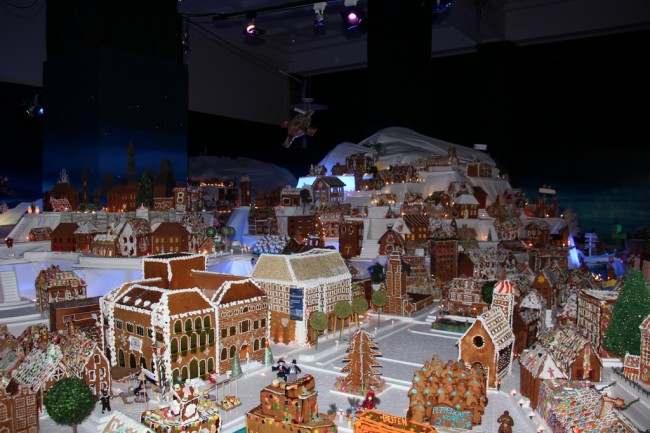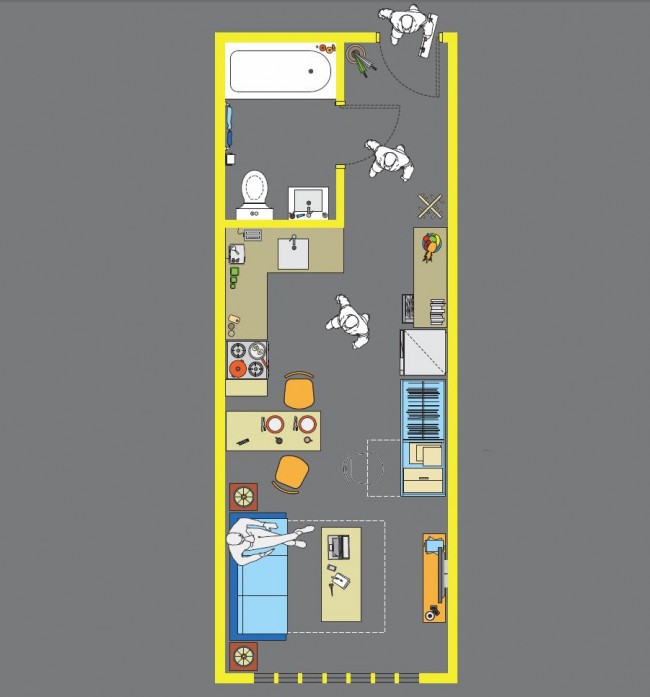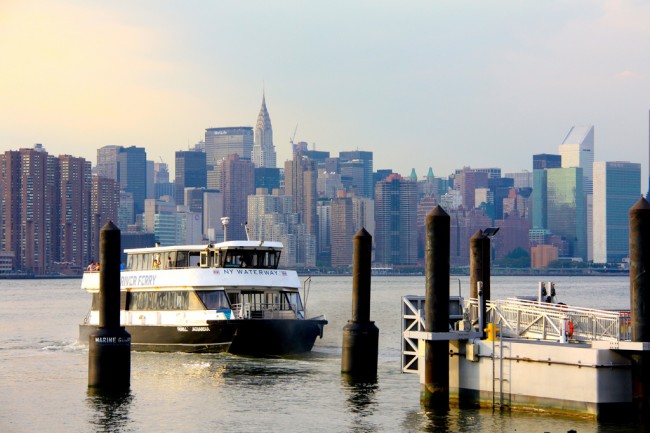
We are celebrating 15 years — and counting — of stories that are deeply researched and deeply felt, that build a historical record of what the city has been.
We are celebrating 15 years — and counting — of stories that are deeply researched and deeply felt, that build a historical record of what the city has been.

Two of our favorite holiday traditions: gingerbread architecture and urban planning | Image via Eva Mostraum
The Omnibus team will be taking a short break for the next couple of weeks to gear up for 2013. In the meantime, we wish all of our readers a happy holiday filled with many urban pursuits! We will be back with a vengeance in the new year. And remember, since this is a season of generosity and all, that Urban Omnibus relies on the support of readers like you. So, if you like what you’re reading, please consider making a donation or becoming a member of the Architectural League today.
MORE CONDOS AT BROOKLYN BRIDGE PARK
A week after opening its newest segment at Pier 5, Brooklyn Bridge Park wants to develop its northernmost site in DUMBO into residences and use the funds generated to support maintenance and other efforts. The park is already moving forward with plans to develop residences and a hotel further south at Pier 1, adding to a growing number of park projects that pursue independent funding models rather than rely on historically inadequate support from the City. This model has worked well for groups like the Central Park Conservancy, but at Hudson River Park things haven’t gone as smoothly.

Example of possible adAPT NYC floorplan | Image via NYC Mayor’s Office
MICROHOUSING FOR AFFORDABILITY
Most housing in New York was built for nuclear families, a group that constitutes only 17% of the city’s population while many students, young professionals, and elderly have tremendous difficulty finding housing they can afford. Last year, the Architectural League and the Citizens Housing & Planning Council organized Making Room, a design study that showcased how new ways of designing housing could help the city provide spaces better suited to the needs of its population, and this year Mayor Bloomberg launched adAPT NYC, a design competition that waives many building regulations to allow smaller, more affordable units. This week, Grist looks at aPodments, a brand of microhousing on the west coast that is providing affordable housing for scores of young residents, but not without controversy from their surrounding neighborhoods.
NEW YORK PUBLIC LIBRARY
Controversy around the New York Public Library’s renovation plans continues this week with the release of long-awaited details of the design by Norman Foster. New York magazine’s Justin Davidson argues that panic over the renovation plan is overwrought but Mark Lamster thinks the plan is not good enough.

East River Ferry approaching the North Williamsburg stop | Image via Juha Uitto
EAST RIVER FERRY KEEPS GOING
Last summer the East River Ferry began service, a pilot project to provide a new form of transportation and promote residential construction along the formerly industrial waterfront of Brooklyn and Queens. While the City wanted to encourage development, they actually tapped into a market that was already there; ridership has surpassed expectations and the City is extending the service for at least another five years, and is considering expanding beyond the current seven stops in Brooklyn, Queens, and Manhattan.
SANDY
As the hardest hit communities in Staten Island, Brooklyn and Queens continue to grapple with what will be long recovery and rebuilding efforts, pockets of Manhattan are also still feeling the effects of Sandy. The damage to the city’s medical care facilities has been extreme, with patient care strained and research disrupted. The R train is back, as is the PATH (without trains between Hoboken and WTC), but the South Ferry Station is going to require $600 million in repairs, among the $4.7 billion the MTA is asking for for the entire system. To help with some of the major projects that will be required to strengthen the city against future storms, the New York City Teachers Pension Fund is committing $1 billion to Post-Sandy reconstruction, infrastructure projects, and energy efficiency retrofits.
The region’s barrier islands — landforms that, as their name suggests, protect coastal regions by absorbing storm surges — bore the brunt of Sandy in certain coastal areas. The power of the storm has changed the entire physical environment of the islands, eroding dunes and opening new channels for water to flow. In addition to barrier islands, many of the area’s natural systems protected adjacent populated areas. New York Times architecture critic Michael Kimmelman argues that damage could have been much worse in some Staten Island neighborhoods were it not for Freshkills Park, a former landfill on Staten Island in the process of being converted into a massive park.
Green infrastructure projects like those at Freshkills can be a key component of planning to protect waterfront communities we are increasingly realizing are at risk, like areas in the city’s Evacuation Zone A. On January 10th, Urban Omnibus editor Cassim Shepard will be moderating The Future of Zone A: New York Neighborhoods on the Frontline of Climate Change, a public discussion with experts in urban ecology, design, and community planning to explore the social, planning, and design challenges for high-risk, and often low-income, coastal areas.
EVENTS AND TO DOs
THE CLOCK
Christian Marclay’s The Clock is returning to New York, showing at MoMA from December 21-January 21. The 24-hour film was created using clips from thousands of movies from the last century, all including either a clock or a reference to a particular time, shown synced with real time (if you are watching the film at 2:43pm, whatever is happening on screen will be taking place at 2:43pm in the movie). On New Years Eve, MoMA will show the piece in its entirety, running from 10:30am – 5:30pm on New Years day, with additional continuous screenings every weekend until the show closes.
WHERE (WE) LIVE
Brooklyn-based So Percussion are wrapping up a series of performances exploring the concept of “home:” “For eight years, So Percussion has lived and worked in Brooklyn, constructing a personal and artistic ecosystem we call home. In Where (we) Live, we open our lives, our work, and home(s), and invite the unknown to ‘come on over.'” The work includes a series of performances and collaborations with video artists, songwriters, painters, poets, choreographers and craftspeople. The show is part of the Brooklyn Academy of Music (BAM)’s Next Wave Festival and concludes with shows tonight and tomorrow in Fort Greene.
ENVIRONMENTAL SUSTAINABILITY FELLOWSHIP
The Michael Kalil Endowment for Smart Design is currently accepting fellowship grant applications. Established in 2001, the Endowment supports environmental sustainability, and the exploration of the design intersections between nature and technology. Proposals are due January 15, 2013, and three winners will be selected. To qualify, you must be a student or faculty at Parsons the New School for Design/New School University, or an outside practitioner or scholar from any design field. In light of Sandy, proposals that address global warming, Sandy itself, and the impact on the constructed environment are encouraged.
The Roundup keeps you up to date with topics we’ve featured and other things we think are worth knowing about.
The views expressed here are those of the authors only and do not reflect the position of The Architectural League of New York.